Philadelphia’s Marvelous Must-See Museums
These ‘don’t-miss’ museums include several often-overlooked treasures
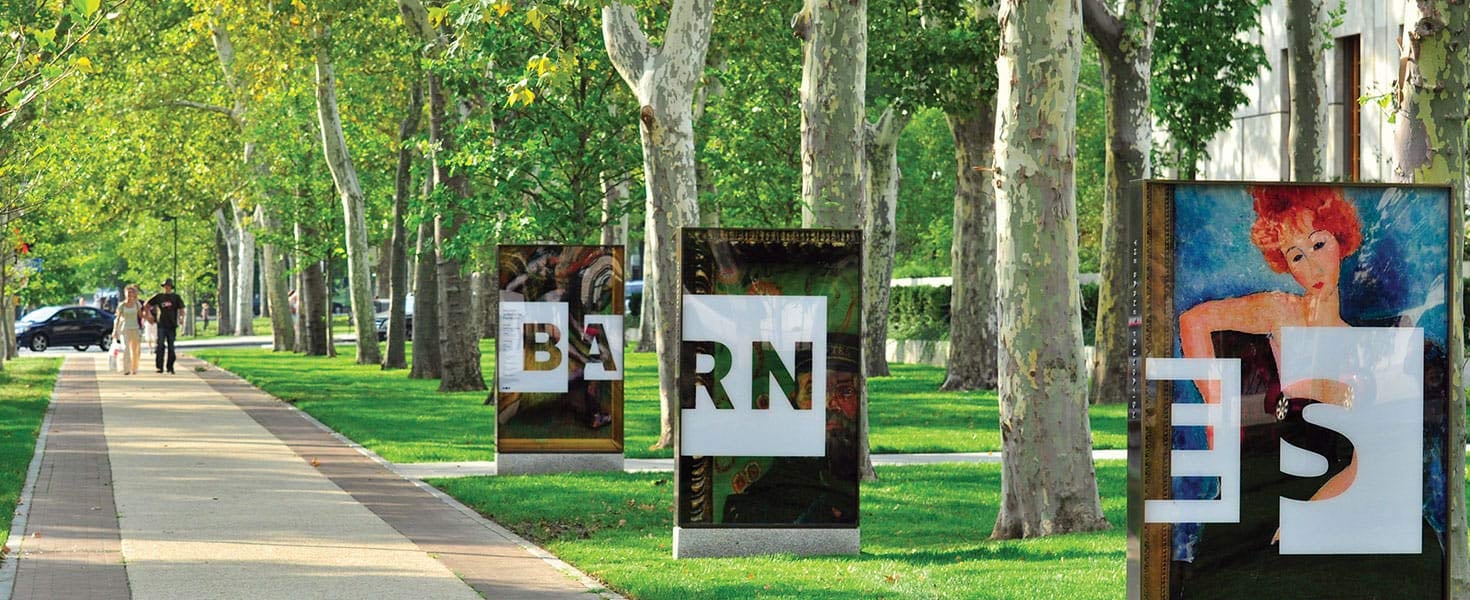
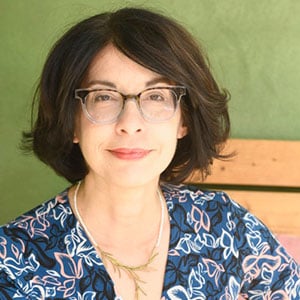
Often overlooked, though, are a handful of gems that encourage us to reconsider the idea of a museum and how we collect and display treasures.
Chief among these is the Barnes Foundation, which observes its 100th anniversary this year. A native Philadelphian and chemist, founder Dr. Albert C. Barnes found himself suddenly very wealthy after he helped bring to market a new antiseptic in 1901. After repeatedly visiting Paris to pick up a van Gogh here, a Picasso there, he opened his gallery in 1922 near his home in Merion, a wealthy Philadelphia suburb.
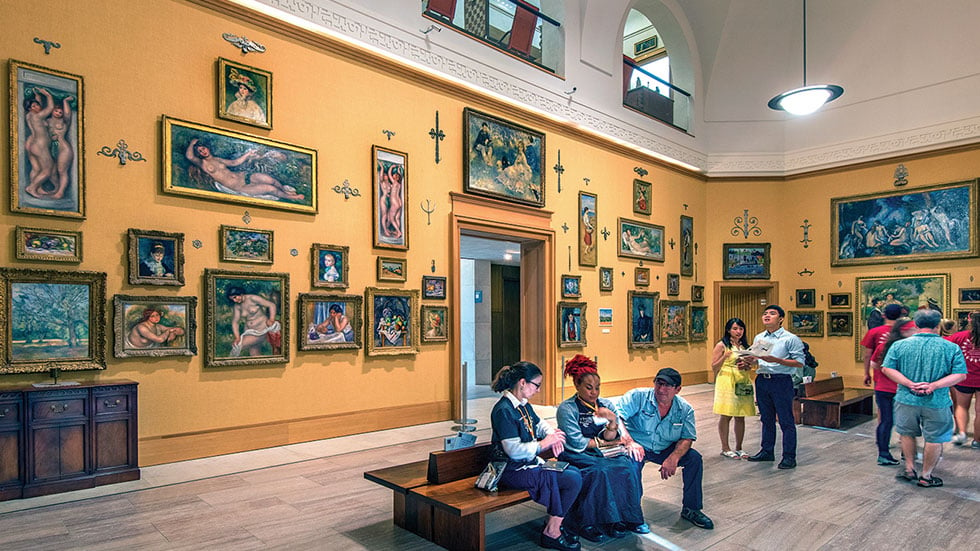 The Barnes Foundation houses the world-renowned collection of Impressionist, Post-Impressionist and early Modern artworks amassed by Albert C. Barnes. Courtesy of Visit Philadelphia
The Barnes Foundation houses the world-renowned collection of Impressionist, Post-Impressionist and early Modern artworks amassed by Albert C. Barnes. Courtesy of Visit PhiladelphiaUsing the collection to illustrate his formalist ideas about understanding art—which emphasized a painting’s visual elements over its historical and biographical contexts—he remained at constant war with the art establishment.
Ten years ago, the Barnes moved into a purpose-built contemporary building in Philadelphia that replicates—to the inch—the dimensions and arrangement of artworks in the original galleries. Highlights include the world’s largest assemblage of paintings by Auguste Renoir (179) and Paul Cézanne (69) as well as The Dance, an enormous triptych mural by Henri Matisse painted from 1932 to 1933. To learn more about this museum click here.
 Visitors peruse the library at The Rosenbach. Photo by Ryan Brandenburg
Visitors peruse the library at The Rosenbach. Photo by Ryan Brandenburg
BOOKS, BONES AND BOTANICALS
Three other must-see museums in the city that often go under the radar of visitors likewise bear the names of their founders.
Today, visitors to The Rosenbach can tour the home that the bachelor Rosenbach shared with his brother and business partner, Philip, and spend some time perusing the shelves of Rosenbach’s own library of rarities, which most famously includes the original manuscript of James Joyce’s Ulysses. In addition to special exhibitions, the museum maintains a permanent exhibit that re-creates the poet Marianne Moore’s book-filled Greenwich Village living room. To learn more about this museum click here.
Medical students still visit the Mütter Museum these days, but schoolchildren and tourists also come to marvel at thousands of medical oddities, such as a tumor removed from President Grover Cleveland’s jaw and a piece of Alfred Einstein’s brain.
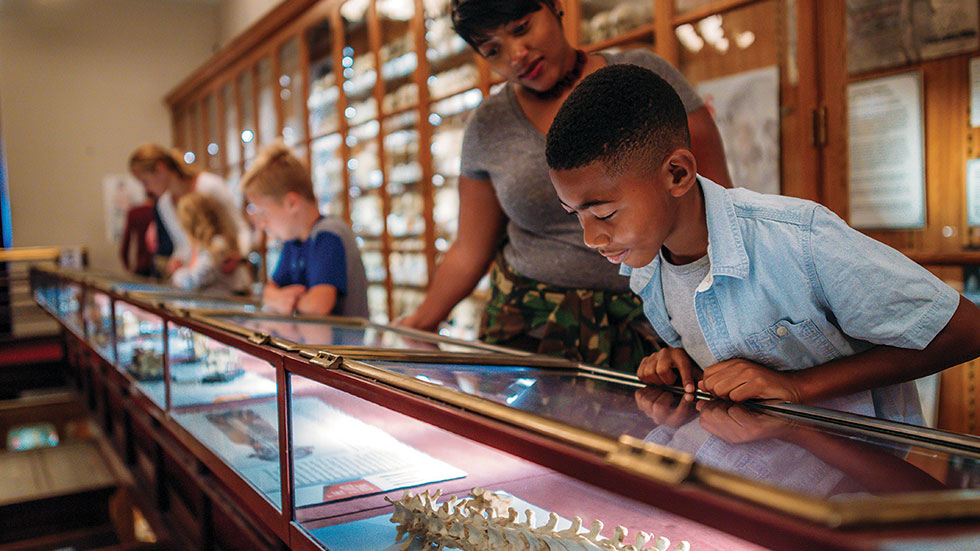 At the Mütter Museum, items on display span the medical realm, from deformed and diseased body parts to a piece of Albert Einstein’s brain. Photo by J. Fusco for Visit Philadelphia
At the Mütter Museum, items on display span the medical realm, from deformed and diseased body parts to a piece of Albert Einstein’s brain. Photo by J. Fusco for Visit Philadelphia As a young doctor studying in Paris in the mid-19th century, Thomas Dent Mütter began collecting anatomical casts and models, which he later used as teaching tools at Jefferson Medical College. While practicing at Jefferson, he also excised all manner of gruesome tumors and tissue from his patients, perfecting a new type of plastic surgery that’s still used today.
When the always-frail doctor retired, then faced with his own mortality (he died at age 47), he began thinking about how his assemblage could live on. The College of Physicians of Philadelphia, a professional organization, was willing to build a home for his collection. It opened in 1863 and has expanded over the decades. To learn more about this museum Click here.
 A skeleton of a draft horse in The Wagner Free Institute of Science. Photo by Rob Cardillo
A skeleton of a draft horse in The Wagner Free Institute of Science. Photo by Rob CardilloThe Wagner Free Institute of Science is a natural history museum founded in 1855 by William Wagner, a philanthropist and amateur scientist who acquired fossils and botanical specimens while traveling around the world on behalf of the famed Philadelphia financier Stephen Girard. What’s most impressive, perhaps, is the sheer volume of these artifacts and the Victorian manner in which they are displayed in row after row of glass and wood vitrines.
The system by which the artifacts are categorized was developed by Joseph Leidy, the revered paleontologist and biologist who assumed leadership of the institution after Wagner died in 1885. Leidy arranged specimens in a fashion that moves progressively through geologic time.
Located near Temple University in a building designed by John McArthur, the architect of Philadelphia’s City Hall, the museum is a National Historic Landmark. To learn more about this museum click here.
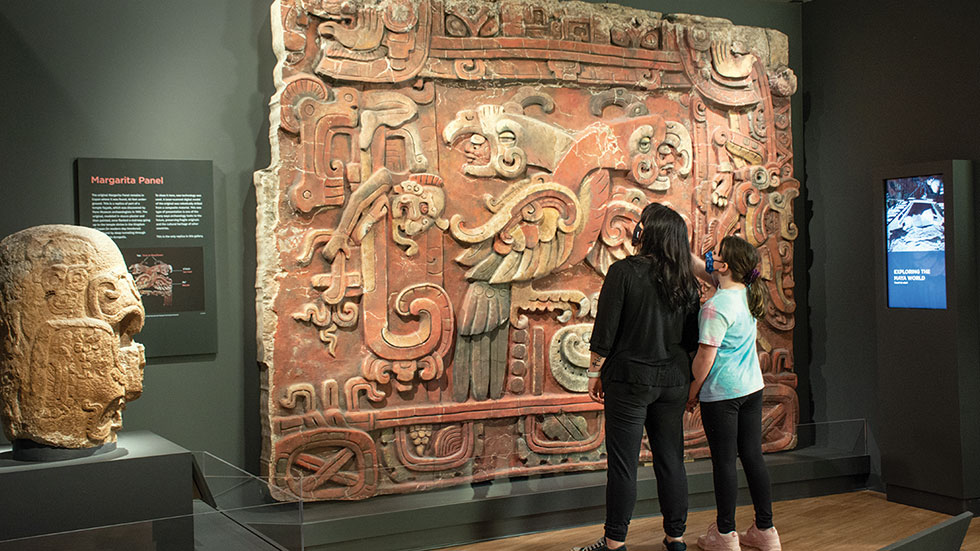 At the Penn Museum’s Mexico and Central America Gallery, visitors take in the Margarita Panel. Courtesy of Penn Museum
At the Penn Museum’s Mexico and Central America Gallery, visitors take in the Margarita Panel. Courtesy of Penn Museum
CULTURAL RICHES
Presenting science through yet another lens, the massive Penn Museum has served since 1899 as a repository for archaeological finds unearthed during the University of Pennsylvania’s history of literally ground-breaking digs (some 300 to date). Its dedicated galleries explore the Americas, Africa, Asia and Europe—the Asia Gallery, situated in the building’s soaring rotunda, is particularly stunning—and home in on such cultures as the Etruscans and Native Americans.
In November, the museum will unveil one more permanent gallery: Crossroads of Culture. The new gallery spotlights the ingenuity of peoples of the Eastern Mediterranean by examining innovations such as a standardized alphabet and monotheistic religions that still impact the world today.To learn more about this museum click here.
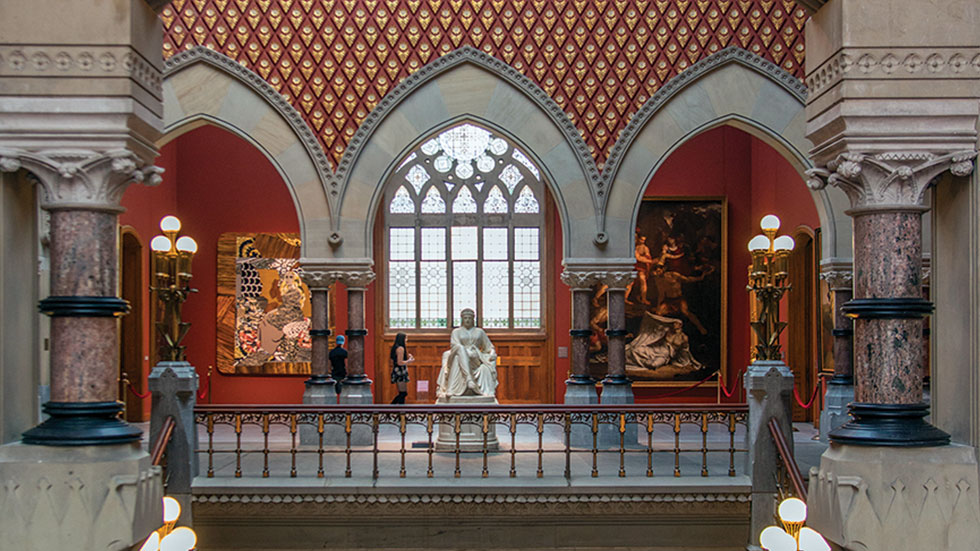 The Pennsylvania Academy of the Fine Arts, founded in 1805, is the nation’s oldest art museum and school. Photo by R. Kennedy for Visit Philadelphia
The Pennsylvania Academy of the Fine Arts, founded in 1805, is the nation’s oldest art museum and school. Photo by R. Kennedy for Visit Philadelphia
ARTFUL CHOICES
Another must-visit, lesser-known museum brings visitors back to the world of art. The Rodin Museum rests serenely on the Benjamin Franklin Parkway just a few blocks from the Philadelphia Museum of Art, which administers the collection. It’s fitting that the first American city to exhibit the works of sculptor Auguste Rodin should still offer one of the largest assemblages of his work outside his native Paris.
Visitors encounter the space via a recently renovated garden that features a reflecting pool and original bronze casts of such iconic pieces as The Thinker and The Burghers of Calais. They then proceed…well, through The Gates of Hell, into the Beaux Arts museum itself, where nearly 150 works—including bronze busts and sculptures, plaster studies, and sketches and other ephemera—await. To learn more about this museum click here.
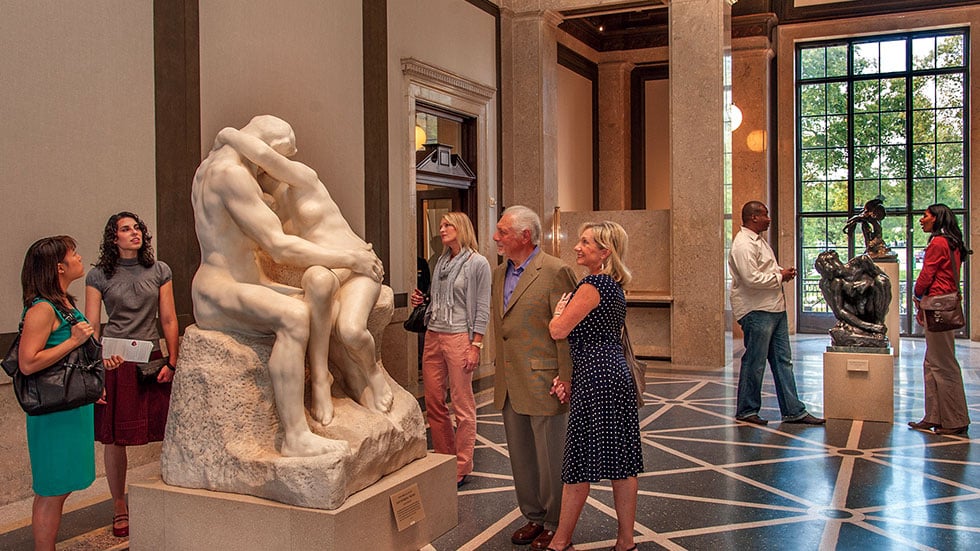 Visitors admire The Kiss at the Rodin Museum. Photo by R. Kennedy for Visit Philadelphia
Visitors admire The Kiss at the Rodin Museum. Photo by R. Kennedy for Visit Philadelphia Art and architecture combine for a powerful experience at the Pennsylvania Academy of the Fine Arts, founded in 1805 by painter Charles Willson Peale and sculptor William Rush, among others. America’s first art school, the academy (known by its acronym PAFA) places a premium on collecting works by American artists, many of them—such as Thomas Eakins, Henry Ossawa Tanner and Mary Cassatt—former faculty members or graduates of the school.
The collection is thrilling—art-lovers may not always remember that the canon is filled with so many luminaries who hailed from this side of the Atlantic—but the building in which it is housed is equally stunning. Designed by Philadelphia native Frank Furness, its fanciful castle-like facade a few blocks north of City Hall only hints at an exuberant Moorish-meets-Gothic interior.
There, chiseled floral motifs cut into marble, decorative tilework on the walls and floor, and gallery-spanning skylights offer a tour de force whose grandeur and individuality encapsulate the ethos that defines so many of Philadelphia’s must-see museums.To learn more about this museum click here.
